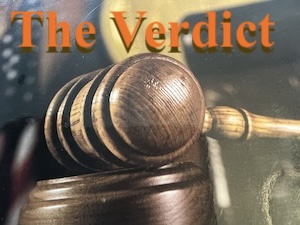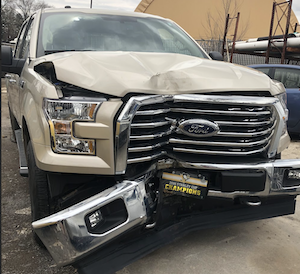 Clients — who hire our Pittsburgh litigation lawyers to sue for money — often ask: how much money can I get at trial? Or, when we represent a defendant: how much money could a jury order me to pay? It all comes down to one question:
Clients — who hire our Pittsburgh litigation lawyers to sue for money — often ask: how much money can I get at trial? Or, when we represent a defendant: how much money could a jury order me to pay? It all comes down to one question:
The wording of the verdict slip.
It’s Not About Justice
Stepping back and looking at the big picture, one truth emerges: civil trials have little to do with “justice.” For example, if new evidence surfaces following a civil verdict, this is not grounds for a new trial (unlike in a criminal case). Plus, civil judges limit how information you can obtain through formal “discovery,” including deposition to prepare for trial. Your discovery must be “proportionate” to the size of the dispute.
So for example, relative to a breach of contract claim for $50,000 in damages, few courts will permit 30+ depositions of witnesses (to learn everything about a case), since it will likely cost the parties $100,000+ in costs and attorney time, even if true “justice” would require so many depositions. In truth, the primary goal of a civil trial has nothing to do with “justice” or “fairness,” but rather to bring closure to matter, so the citizens involved can stop fighting, and go back to working and paying their taxes. Period.
So how does our society define “closure”?
Simple.
 It’s done via a piece of paper which contains a number: the verdict. Until then, settlement discussions hinge on what number the jury might write on the verdict slip. Only, fewer than 5% of civil cases go to trial. There are “experienced litigators” who have never tried a case by jury. But it’s important for clients — and their lawyers — to fully understand exactly what information will appear on the verdict slip, and what it means,
It’s done via a piece of paper which contains a number: the verdict. Until then, settlement discussions hinge on what number the jury might write on the verdict slip. Only, fewer than 5% of civil cases go to trial. There are “experienced litigators” who have never tried a case by jury. But it’s important for clients — and their lawyers — to fully understand exactly what information will appear on the verdict slip, and what it means,
The Verdict Slip’s Wording
All verdict slips have three things in common — a determination of (1) who is at fault (or liable), if anyone, (2) whether the Defendant’s liability caused damages and (3) the amount of the damages. With those questions answered, the verdict can be entered as a judgment, for use to collect against the Defendant’s assets or (liability insurance coverage).
 But there is one manner in which verdict slips may differ, significantly: does the verdict provide for one lump sum of damage or will the jury itemize each aspect of damages? For example, does the verdict call for one lump sum for “damages,” or will there be separate line items for “pain and suffering” and “lost wages”?
But there is one manner in which verdict slips may differ, significantly: does the verdict provide for one lump sum of damage or will the jury itemize each aspect of damages? For example, does the verdict call for one lump sum for “damages,” or will there be separate line items for “pain and suffering” and “lost wages”?
The importance is simple, as anyone who has eaten at a buffet can attest. The cost of a buffet is relatively cheap. You can get your fill for one fair price, if you compare it to à la carte dining, where you pay a separate price for appetizers, soup / salad, entrees and dessert. The Palms in Las Vegas, for example, charges $42.99 for a prime rib and crab leg buffet. But the identical food could cost twice as much elsewhere, if itemized.
The same concept applies to a verdict slip: lump sum awards (also called “aggregate awards”) tend to be relatively low, compared to a verdict slip containing a separate line for each item of damages.
Who Wants the Buffet?
There are two people at trial who prefer the buffet-style “lump sum” verdict slip. The first is the defense lawyer. He doesn’t want a jury — who already found his client liable — to stew over each item of damages. Each line-item presents a fresh new option for the jury to award more money to the Plaintiff.
 For example, in a motor vehicle injury case, the “damages” section of the verdict slip could have a single line for “damages.” Thus, the jury will hear all the evidence and come up with a lump sum number and be done. Let’s say the “number” is $200,000, which sounds massive to most people.
For example, in a motor vehicle injury case, the “damages” section of the verdict slip could have a single line for “damages.” Thus, the jury will hear all the evidence and come up with a lump sum number and be done. Let’s say the “number” is $200,000, which sounds massive to most people.
A jury may find that awarding one “sticker shock” verdict of 200K, for example, creates “justice” for a plaintiff, whose injuries are: a hospitalization for some broken bones (requiring minor orthopedic surgery). Nobody has died. Nobody is permanently disabled.
That said, the same jury could reach a different conclusion if forced to itemize damages:
-
-
-
-
- pain and suffering $_________ (jury’s finding: $50,000)
- medical bills $________ ($45,000)
- future medical expenses _______ ($35,000)
- lost wages from the accident _______ ($40,000)
- disfigurement from the surgical scar ($25,000)
- future lost wages ______ ($50,000)
- emotional distress ________ ($25,000)
- punitive damages _______($50,000)
-
-
-
Here, the same jury — that had found a lump sum $200,000 verdict was “just” could — might instead enter a verdict for $320,000, if required to itemize. Thus, it’s no surprise why a defense lawyer would want a lump sum verdict slip.
But there’s another person in the courtroom who will strongly prefer a lump sum verdict.
The judge.
Verdict Slips That Create Appellate Issues
Judges preside over jury trials and make no mistake: the judge wants his jury’s verdict to stand. Judges are on a fixed salary, meaning, they don’t get paid more money to handle the retrial of a case sent back down from an appellate court. However, the best way to prevent a successful appeal is to render decisions that cannot be appealed, successfully.
The fact is, a lump sum verdict creates less specificity for an appellate court to second guess on review for the trial court or a jury’s “errors.” For example, a lump sum verdict — that fails to provide a separate itemization for “pain and suffering” — makes it impossible to determine how much the jury had awarded for “pain and suffering” (in particular) which, in turn, makes it virtually impossible to determine whether the jury’s award had had been unreasonably high or low. This is great news for the trial judge. It means that cases going to the jury with one line-item for “damages” are much likely to be set aside on appeal and sent back down for re-trial.
But for the party losing at trial, a lump sum verdict slip can be disastrous.
$3.8 Million Mistake: Failure to Requests an itemized Verdict
In Cowher v. Kodali, 283 A.3d 794 (Pa. 2022), the Plaintiff — on behalf of the decedent — brought a claim for medical practice against the Defendants, whose medical negligence had allegedly killed the decedent. The jury entered a verdict as follows:
The jury found Dr. Kodali’s conduct fell below the applicable standard of medical care, and his negligence was a factual cause of harm to decedent. See id. at 168. In addition, the jurors awarded plaintiff … $3,833,000 in survival damages. See id. at 169.
 Survival damages include both the costs of medical treatment to try to save the Decedent’s life, and also “pain and suffering” that the decedent would have suffered. The Defendant-appellant alleged that Plaintiff’s expert rendered improper testimony as to “pain and suffering.” However, the Defendant had never objected to the lump sum verdict slip. Ultimately, the Supreme Court of Pennsylvania ruled:
Survival damages include both the costs of medical treatment to try to save the Decedent’s life, and also “pain and suffering” that the decedent would have suffered. The Defendant-appellant alleged that Plaintiff’s expert rendered improper testimony as to “pain and suffering.” However, the Defendant had never objected to the lump sum verdict slip. Ultimately, the Supreme Court of Pennsylvania ruled:
[W]e hold defendants waived a new trial on survival damages under the general verdict rule. This rule provides: “`when the jury returns a general verdict involving two or more issues and its verdict is supported as to at least one issue, the verdict will not be reversed on appeal.'”
Thus, the Defendant’s failure to object to the verdict slip — which provided for only a lump sum calculation of damages without itemization — waived the right to challenge particular items of damages found by the jury.
Let’s Get Started!
Contact a Pittsburgh lawyer for any litigation claim or defense in Western PA.
412.342.0992
